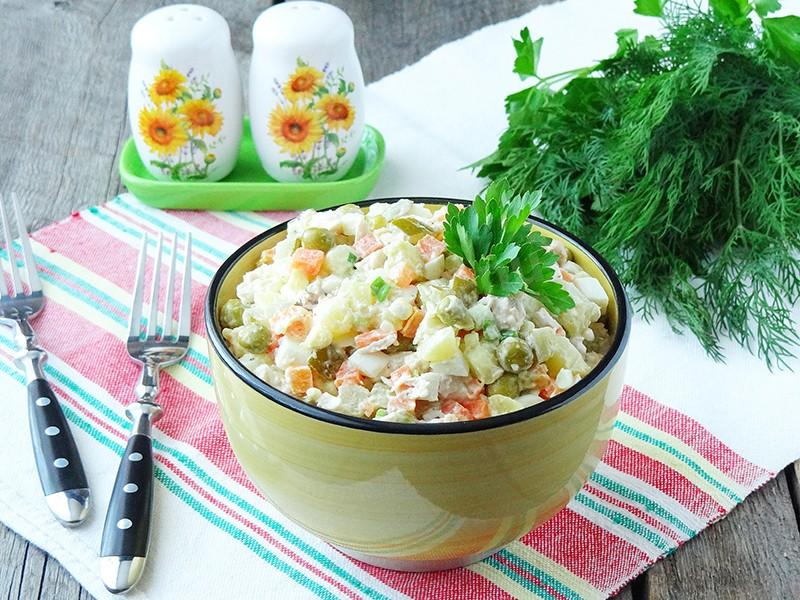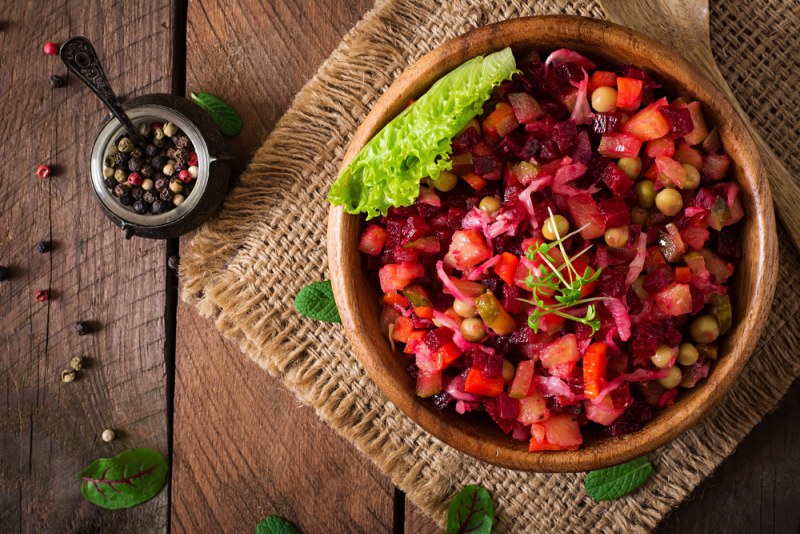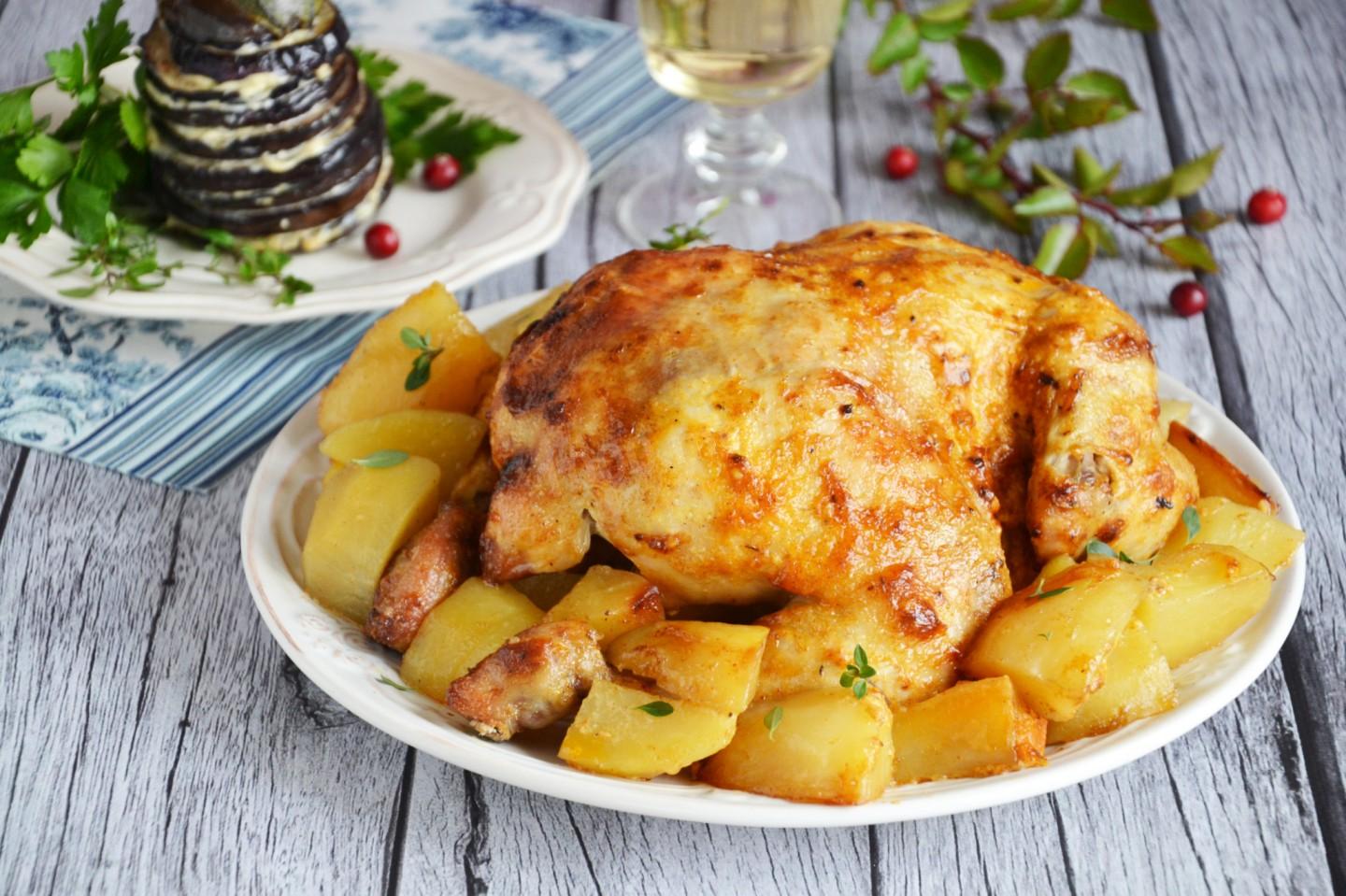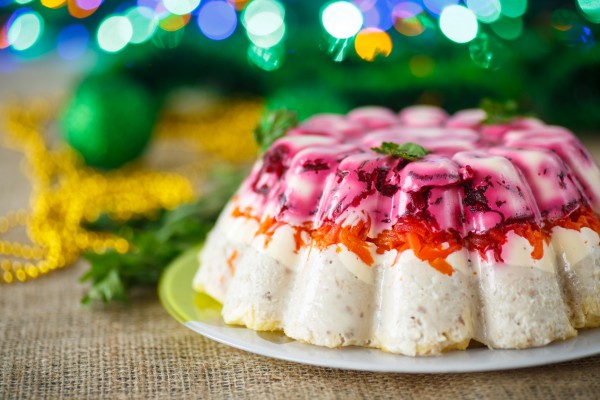While bubbles of champagne may seem a universal sign of New Year celebrations, food, traditionally eaten during these days differs widely from place to place.
As the New Year arrived around the Caspian region, special dishes abound, as do beshbarmak in Kazakhstan, dolma in Azerbaijan, kazanlama in Turkmenistan, and kholodets in Russia.
But some of this region’s festive food traditions are similar to each other — a kind of legacy of the Soviet Union, of which Azerbaijan, Kazakhstan, Russia, and Turkmenistan were part until 1991. Caspian News has put together its list of “common” New Year's dishes around the region that could hardly be missed.
Russian Salad or “Stolichny”
Probably one of the most popular dishes in the region, “Stolichny” has a long history that goes back to Tsar Russia. Lucien Olivier, who used to work as the chief of Moscow’s most celebrated restaurant Hermitage, invented the original version of the salad in the 1860s, and it quickly became immensely popular with Hermitage regulars. In its initial form, the dish was made of hazel grouses, Capparis, crayfish and special sauce. But later the recipe had been transformed in what is now loved by many gourmets — hazel grouses were replaced by chicken, Capparis with green peas and cucumber, and carrots were added to hide the lack of crayfish. The recipe, however, did not suffer at all, while the taste of the salad has already become a legend.

Vinegret
This salad’s origin remains wrapped in mystery as some food experts claim its recipe was brought from abroad, but find it difficult to say when exactly. Probably, its name derives from the French ‘vinaigrette’ — a sauce made of vinegar and vegetable oil but now replaced with lemon juice. Thanks to its unpretentious ingredients, vinegret has become an integral part of the regional cuisine, while the word itself has become a household word — now it also means when someone's mind is a complete mess. Although recipes for this dish may vary, some remain essential, including beet, carrots, potatoes, lemon juice (or vinegar) and vegetable oil.

Roast chicken
There’s nothing better than a delicious roast chicken for New Year celebrations. They say the tradition of cooking chicken for this holiday dates back to the 1930s when Georgian recipes leaked from expensive restaurants. Over time, Georgian tabaka seasoned with various spices and sauces gave birth to a simpler dish – chicken cooked in the oven or in an ordinary frying pan. Now, it can be stuffed with nuts, or coated with mayonnaise, which covers the chicken with a crispy crust during the cooking process.

Herring under a fur coat
Well, this dish goes far beyond simple imagination and may shock unprepared gourmets. The story of the so-called “dressed herring” is said to go back to mid-19th-century Russia when chopped salads were in vogue. By the 1960s, the recipe was slightly changed and got its modern form – now all the ingredients are laid out in even layers and covered with mayonnaise. As of today, the dish is unequivocally popular in the region and features salt-cured herring, grated potatoes, carrots, onions, and beets, which are topped with beet-dyed, bright pink mayonnaise and grated hard-cooked eggs.

Pilaf
Pilaf as a festive dish is wildly popular among residents of Azerbaijan, Kazakhstan, Turkmenistan, and unsurprisingly in Russia. Considered as a sign of wealth and prosperity, the dish may vary in these countries. In Azerbaijan, there are about 200 varieties of pilaf, but all of them are the combination of two constituent parts: boiled rice and gara, a separately cooked sauce, which can be made of meat (traditionally lamb) together with onions and dried fruits such as plums, and raisins. In Kazakhstan and Turkmenistan, pilaf requires that the meat and rice be cooked together. Those living in Russia prefer the recipe that came from Uzbekistan. This dish consists of rice, onion, carrots, and meat, which all cooked slowly in layers in a traditional cast-iron kazan, or a cauldron.








 Iran's senior military leaders described the drone and missile attack on Israel on April 14 night as “successful".
Iran's senior military leaders described the drone and missile attack on Israel on April 14 night as “successful".
 The number of evacuees from flooded areas in Kazakhstan has reached 97,852 people, including about 32,856 children since March 27.
The number of evacuees from flooded areas in Kazakhstan has reached 97,852 people, including about 32,856 children since March 27.
 Iranian President Ebrahim Raisi warned Israel that it would face a "real and extensive" response if it makes any "mistake" following Tehran’s missi...
Iranian President Ebrahim Raisi warned Israel that it would face a "real and extensive" response if it makes any "mistake" following Tehran’s missi...



